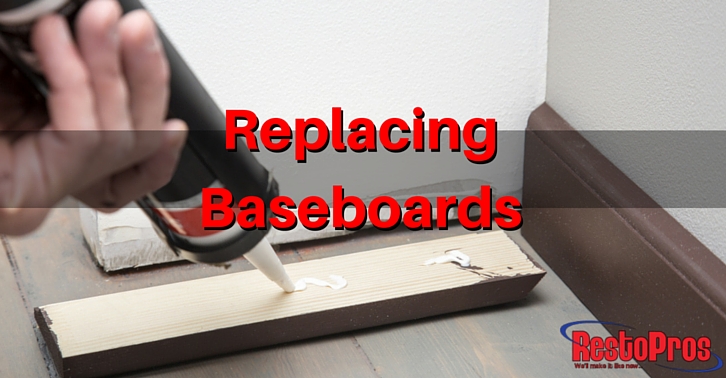 Baseboards, beautiful work that’s ignored when done correctly. Baseboards create a seamless appearance in your home by giving a smooth gradient between floor and wall. Without baseboards, the harsh corner between carpet and wall would look tacky and unappealing. Baseboards are also one of the first things to sustain damage during flooding or a mold infestation that spreads too far. So whether you’re remodeling for appearance or repairing damage sustained from a flood or pest invasion, it’s helpful to know how to replace baseboards yourself. Especially since replacing baseboards is a simple endeavor that can go a long way to sprucing up your home.
Baseboards, beautiful work that’s ignored when done correctly. Baseboards create a seamless appearance in your home by giving a smooth gradient between floor and wall. Without baseboards, the harsh corner between carpet and wall would look tacky and unappealing. Baseboards are also one of the first things to sustain damage during flooding or a mold infestation that spreads too far. So whether you’re remodeling for appearance or repairing damage sustained from a flood or pest invasion, it’s helpful to know how to replace baseboards yourself. Especially since replacing baseboards is a simple endeavor that can go a long way to sprucing up your home.
How to Remove Baseboards
The first step in replacing baseboards is to remove the old ones. Now, if this is part of a larger remodel, either because you’re having to replace the wallboard or are building an addition to the room, removing baseboards is easy since you’re removing part of the wall anyway, but if you simple need to replace the baseboards, you’ll want to do your best to avoid damaging the wall behind the board.
To remove baseboards and trim, all you’ll need is:
- Utility Knife
- Hammer
- Trim Puller
Very carefully use the utility knife to cut through any caulk that exists along the trim. If your baseboards do not use caulk and the trim is just butted up against the wall, then you can skip this entirely. Place the trim puller firmly against the wall with the wedge pushed between the trim and wall. Hit the top of the trim puller with a hammer to knock it in between the baseboard and the wall. Use the trim puller to leverage the base board free of the wall. You can see how easily this works in the video below:
Installing Baseboards
The main thing to remember when installing new baseboards, it to double check all of your measurements. Since installing a baseboard is as simple as gluing or nailing the boards into place (just be sure you’re nailing the boards into a wall stud and not just sheetrock) you’ll want to make sure that the length of baseboard is long enough. Before finishing all of your cuts.
If you’re concerned with getting a clean corner for your baseboards, we recommend following the advice seen below:
Be sure to keep any sections of baseboard that you don’t use. You may find yourself wanting to replace small sections of the board over the life of your house and having a run of the same type of baseboard on hand is useful.
Don’t forget to follow RestoPros on Facebook, Twitter, LinkedIn, and Google+ for new Updates, News, and Discounts!
